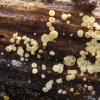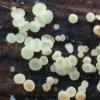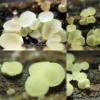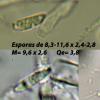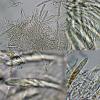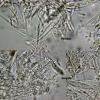
29-12-2015 20:58
Thorben HülsewigHi there,Today i found a nice fungus on a rotten w

29-12-2015 19:27
 Bernard CLESSE
Bernard CLESSE
Sur place à feu. a) poils septés, brun clair, c

28-12-2015 15:17
Thorben HülsewigHi there,yesterday i found a white funghi on Pinus

29-12-2015 00:41
Hi to everybody I need your help with this fungus

28-12-2015 05:24
Collected 24 december 2015, on Ulmus americanus ba

28-12-2015 10:39
 Joop van der Lee
Joop van der Lee
Found on cow dung.Apothecia: 2.67 mm in diameter;

27-12-2015 14:04
 Bernard CLESSE
Bernard CLESSE
Bonjour à tous,Voici un Hypocrea venant sur branc

26-12-2015 13:08
Nina FilippovaDear colleagues,I would appreciate your help in fi

27-12-2015 16:40
Cvenkel MiranphotoIn beetween oak log & ground. From far it
Calycina ??
Castillo Joseba,
30-12-2015 12:37
A ver si hay alguna opinión
Saludos
Joseba
Hans-Otto Baral,
30-12-2015 21:00

Re : Calycina ??
This is regrettabvly not in good shape, difficult to comment. Calycina sp. of course.
Castillo Joseba,
30-12-2015 21:06
Re : Calycina ??
Gracias Zotto Felix 2016
